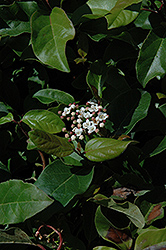Fri & Sat 8am - 8pm
Sun 8am - 7pm
Anytown, USA 12345
fax: 261.787.0463
e-mail: info@successgc.com


Plant Finder

Height: 8 feet
Spread: 8 feet
Sunlight:
![]()
![]()
Hardiness Zone: 6b
Description:
A showy evergreen variety with lusterous deep green leaves that emerge copper-red; plentiful clusters of white flowers in spring, followed by shiny red fruits that are attractive to birds; great for the shrub border or screening
Ornamental Features
Japanese Viburnum features showy fragrant white flat-top flowers at the ends of the branches in mid spring. The red fruits are held in abundance in spectacular clusters in mid summer. It has dark green evergreen foliage which emerges coppery-bronze in spring. The glossy pointy leaves remain dark green throughout the winter.
Landscape Attributes
Japanese Viburnum is a dense multi-stemmed evergreen shrub with a more or less rounded form. Its average texture blends into the landscape, but can be balanced by one or two finer or coarser trees or shrubs for an effective composition.
This is a relatively low maintenance shrub, and should only be pruned after flowering to avoid removing any of the current season's flowers. It is a good choice for attracting birds to your yard, but is not particularly attractive to deer who tend to leave it alone in favor of tastier treats. It has no significant negative characteristics.
Japanese Viburnum is recommended for the following landscape applications;
- Accent
- Mass Planting
- Hedges/Screening
- General Garden Use
Planting & Growing
Japanese Viburnum will grow to be about 8 feet tall at maturity, with a spread of 8 feet. It tends to be a little leggy, with a typical clearance of 1 foot from the ground, and is suitable for planting under power lines. It grows at a medium rate, and under ideal conditions can be expected to live for 40 years or more.
This shrub does best in full sun to partial shade. It prefers to grow in average to moist conditions, and shouldn't be allowed to dry out. It is not particular as to soil type or pH. It is somewhat tolerant of urban pollution. This species is not originally from North America.
